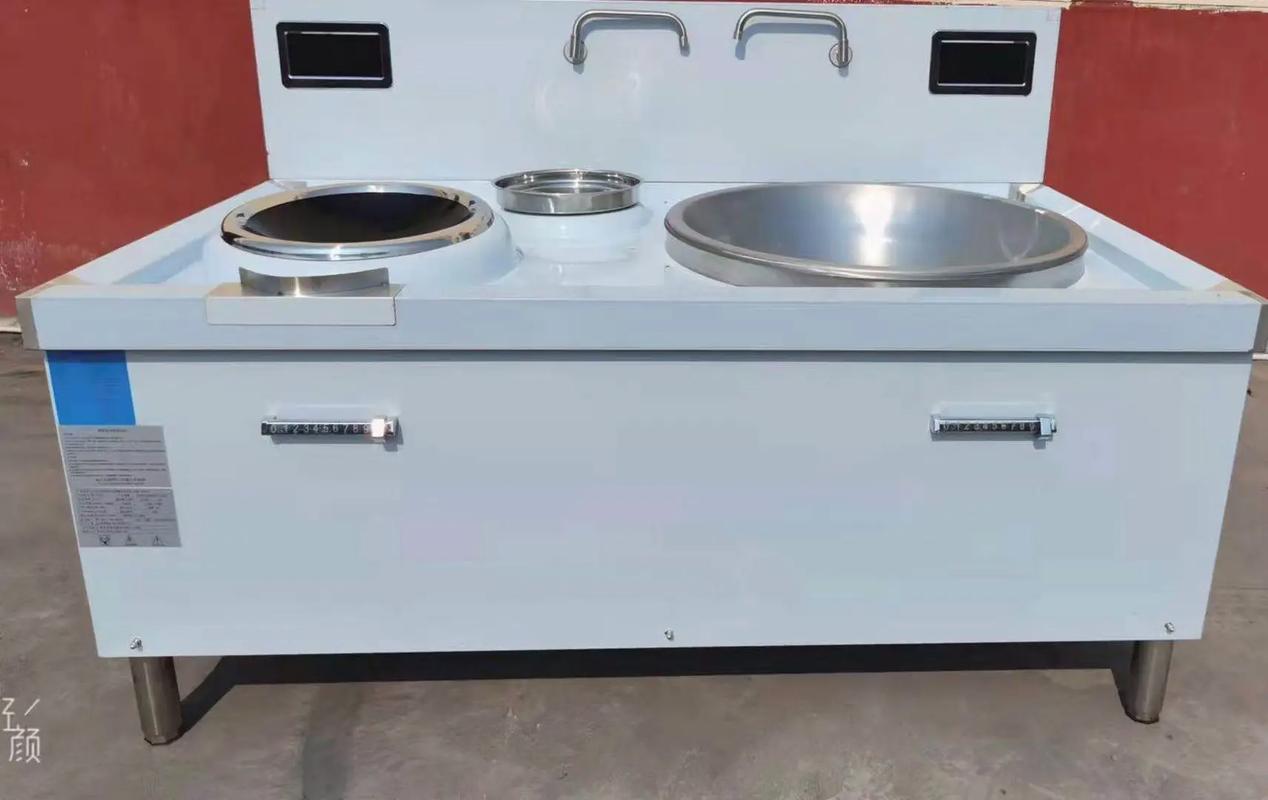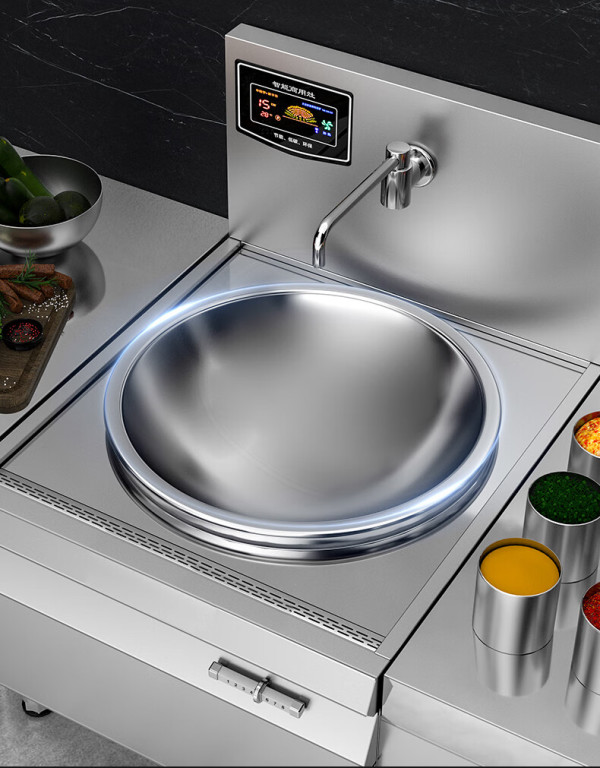Having worked in the catering equipment industry for many years, I understand the dilemmas and considerations restaurant owners face when selecting kitchen equipment. Commercial induction cookers, with their efficiency, energy-saving features, and environmental benefits, have become increasingly popular in restaurant kitchens. But are they truly suitable for your restaurant? Today, drawing on my industry experience, I’ll dive into the pros and cons of commercial induction cookers, their suitable applications, and how to determine if they’re the right fit for your restaurant.

Core Advantages of Commercial Induction Cookers
Commercial induction cookers differ fundamentally from household models, designed specifically for high-intensity, long-duration use in餐饮 environments. Here are the key advantages I’ve observed:
High Cooking Efficiency: Induction cookers heat the pot directly through electromagnetic induction, achieving a thermal efficiency of over 90%, far surpassing the 40%-60% of traditional gas stoves. This means faster cooking times and higher table turnover rates.
Energy-Saving and Eco-Friendly: With no open flames or combustion exhaust, induction cookers reduce kitchen smoke and heat radiation. In today’s environmentally conscious world, where many cities impose strict emission regulations on餐饮 businesses, induction cookers help alleviate environmental compliance pressures.
Precise Temperature Control: Induction cookers offer highly accurate temperature adjustments, ideal for both high-heat stir-frying and low-heat simmering. This is particularly valuable for chain restaurants requiring standardized dishes.
Safe and Reliable: Without open flames, the risk of fire hazards is minimized. Induction cookers also typically include safety features like overheat protection and automatic shut-off, enhancing kitchen safety.
However, every coin has two sides. Whether these advantages can be fully realized depends on your restaurant’s type and specific needs.

Applicable Scenarios: Which Restaurants Are Suitable for Commercial Induction Cookers?
Throughout my career, I’ve worked with various餐饮 businesses, from street food stalls to upscale hotel restaurants. The suitability of commercial induction cookers varies by scenario. Here are the types of restaurants where they excel:
Fast-Food Chain Restaurants: Fast-food outlets prioritize efficiency, and induction cookers’ rapid heating and precise temperature control ensure quick dish preparation, meeting peak-hour demands.
Hot Pot Restaurants: Induction cookers are a staple in hot pot restaurants, offering safety, cleanliness, and ease of maintenance, which enhance the dining experience.
Small Restaurants or Cafés: For space-constrained kitchens, induction cookers are compact and flame-free, making them ideal for open kitchen designs.
Eco-Conscious Restaurants: If your restaurant operates in a city with stringent environmental regulations or aims to promote a green餐饮 brand, induction cookers are an excellent choice.
Conversely, if your restaurant specializes in traditional Chinese dishes requiring intense wok hei (the smoky flavor from high-heat stir-frying) or relies on charcoal grilling, like some Japanese restaurants, induction cookers may not be the best fit. I’ll explain why later.

Limitations of Commercial Induction Cookers
While commercial induction cookers have many strengths, they’re not a one-size-fits-all solution. Here are some limitations I’ve noted that restaurant owners should consider:
High Pot Requirements: Induction cookers only work with ferromagnetic cookware, such as stainless steel or cast iron. Aluminum or ceramic pots are incompatible, potentially increasing initial procurement costs.
High Power Demand: Commercial induction cookers typically range from 5kW to 20kW, requiring robust electrical systems. Older restaurant wiring may need upgrades, adding to expenses.
Not Ideal for Traditional High-Heat Cooking: Chinese cuisine emphasizes “fire control,” particularly for stir-frying, which requires instantaneous high heat. Gas stoves can reach over 1200°C, while induction cookers typically max out around 300°C, falling short in firepower.
Higher Initial Cost: Although they save energy in the long run, commercial induction cookers are generally more expensive upfront than gas stoves, especially for high-power models.
To provide a clearer comparison, I’ve compiled the following table contrasting commercial induction cookers and traditional gas stoves:
| Equipment Type | Thermal Efficiency | Safety | Applicable Scenarios | Initial Cost |
|---|---|---|---|---|
| Commercial Induction Cooker | High (90%+) | High (No Flame) | Fast Food, Hot Pot, Small Restaurants | Higher |
| Traditional Gas Stove | Medium (40%-60%) | Medium (Open Flame) | Traditional Chinese, BBQ Restaurants | Lower |
How to Determine If a Commercial Induction Cooker Is Right for Your Restaurant?
When advising clients on equipment selection, I typically analyze the following factors:
1. Cuisine and Cooking Needs
If your restaurant serves Sichuan or Hunan dishes that rely on intense stir-frying, a traditional gas stove may be better suited. While induction cookers can handle stir-frying, their firepower may not deliver the coveted “wok hei.” However, for hot pot restaurants, Western-style eateries, or casual dining, induction cookers’ precise temperature control and cleanliness shine.
2. Kitchen Electrical Capacity
Commercial induction cookers demand significant power, especially when multiple units operate simultaneously, often requiring three-phase electricity and dedicated circuits. I once worked with a client whose restaurant was in an older urban area with outdated wiring, forcing them to stick with gas stoves. Before purchasing, have a professional electrician assess your kitchen’s power capacity.
3. Budget and Long-Term Costs
While commercial induction cookers have a higher upfront cost, their energy efficiency and lower maintenance costs can make them more economical over time. If your budget is tight, consider starting with a mid-range single-burner induction cooker and gradually transitioning to a fully induction-based kitchen.
4. Environmental and Regulatory Requirements
Many cities have introduced strict餐饮 regulations limiting open-flame equipment. Induction cookers, with no exhaust emissions, easily meet these standards. If your restaurant is in an environmentally sensitive area, induction cookers may be the only viable option.

Real-World Case Studies
To illustrate the practical applications of commercial induction cookers, I’ll share two real-world cases from my experience:
Case 1: Successful Transition for a Fast-Food Chain
I once consulted for a national fast-food chain that relied on gas stoves but struggled with heavy kitchen smoke and poor working conditions for staff. We replaced their equipment with ten 8kW commercial induction cookers. The result? A cleaner kitchen environment, a 20% increase in dish preparation speed, and improved customer satisfaction. Although the initial electrical upgrades were costly, the energy savings recouped the investment within a year.
Case 2: A Failed Attempt at a Traditional Chinese Restaurant
Another client, a Cantonese restaurant, attempted to switch to induction cookers from gas stoves. However, they found that the induction cookers couldn’t meet the high-heat demands of Cantonese stir-frying, resulting in dishes lacking authentic flavor. They ultimately reverted to gas stoves. This case taught me that equipment choices must align with the cuisine’s specific needs, not just industry trends.
Usage and Maintenance Tips
If you decide to adopt commercial induction cookers, here are some practical tips to ensure optimal performance:
Choose Compatible Cookware: Opt for flat-bottomed, ferromagnetic pots, ensuring the pot’s base matches the cooker’s heating zone to avoid energy waste.
Regular Cleaning: Induction cookers often have glass-ceramic surfaces prone to oil stains. Clean daily with a neutral detergent to prevent scratches.
Ensure Proper Ventilation: Induction cookers generate significant heat during operation. Ensure sufficient space around the equipment to prevent frequent activation of overheat protection.
Train Staff: Induction cookers operate differently from gas stoves. Provide basic training for chefs to familiarize them with power settings and safety features.
Future Trends: The Potential of Induction Cookers in the Catering Industry
From an industry perspective, the market share of commercial induction cookers is steadily growing. Based on data I’ve reviewed, the global commercial induction cooker market exceeded $5 billion in 2024 and is projected to grow at over 10% annually for the next five years. This growth is driven not only by technological advancements but also by environmental policies and energy transitions. With renewable energy becoming more accessible, electricity costs and stability are expected to improve, making induction cookers an increasingly attractive option for restaurants.

Conclusion
Whether a commercial induction cooker is suitable for your restaurant depends on several factors. Its energy efficiency, safety, and high performance make it ideal for fast-food chains, hot pot restaurants, and eco-conscious establishments, but it may fall short for traditional Chinese cuisines requiring intense heat. As a restaurant owner, weigh your cuisine type, electrical capacity, budget, and regulatory requirements to make an informed decision. If you’re unsure, start with a single induction cooker to test its performance. With the right choice, this equipment can significantly enhance your restaurant’s operations.
Frequently Asked Questions
1. What is the typical power range for commercial induction cookers, and what restaurant sizes are they suitable for?
Commercial induction cookers typically range from 3kW to 20kW. Small restaurants (20-50 seats) can use 5kW-8kW single-burner models, while medium to large restaurants (50+ seats) may need multi-burner or high-power units.
2. Are induction cookers or gas stoves more cost-effective?
In the short term, gas stoves have lower upfront costs. Over time, induction cookers are more cost-effective due to higher efficiency and predictable electricity costs, though this depends on local energy prices.
3. Do induction cookers affect chefs’ cooking habits?
Yes, to some extent. Induction cookers use digital temperature controls, unlike gas stoves’ flame adjustments. Chefs accustomed to open-flame stir-frying may need time to adapt.
4. How do I choose a commercial induction cooker brand?
Opt for reputable brands with reliable after-sales service. Focus on power, cooling systems, and safety features. Check user reviews or consult professionals before buying.
5. What dishes are induction cookers best suited for?
They excel in hot pot, soups, frying, and Western dishes requiring consistent heat. They’re less suitable for high-heat stir-frying or charcoal grilling.
Feel free to leave any other questions, and I’ll do my best to answer!





